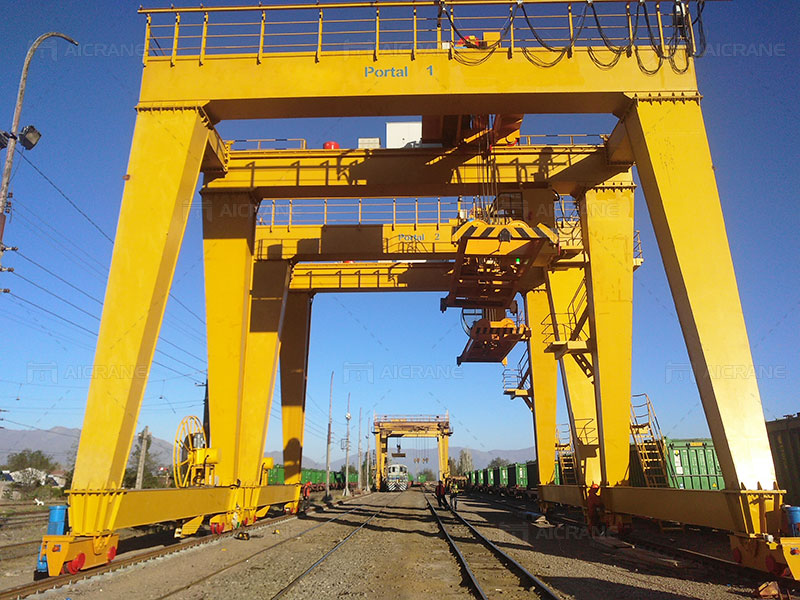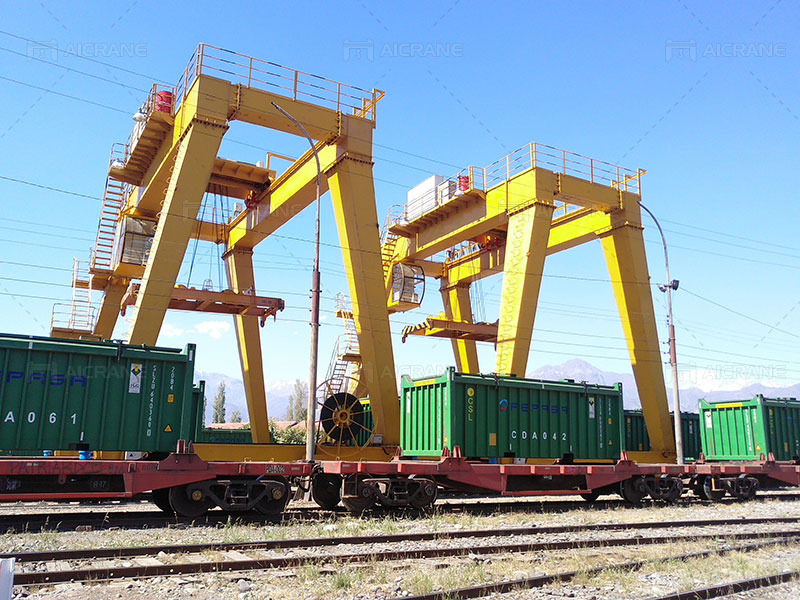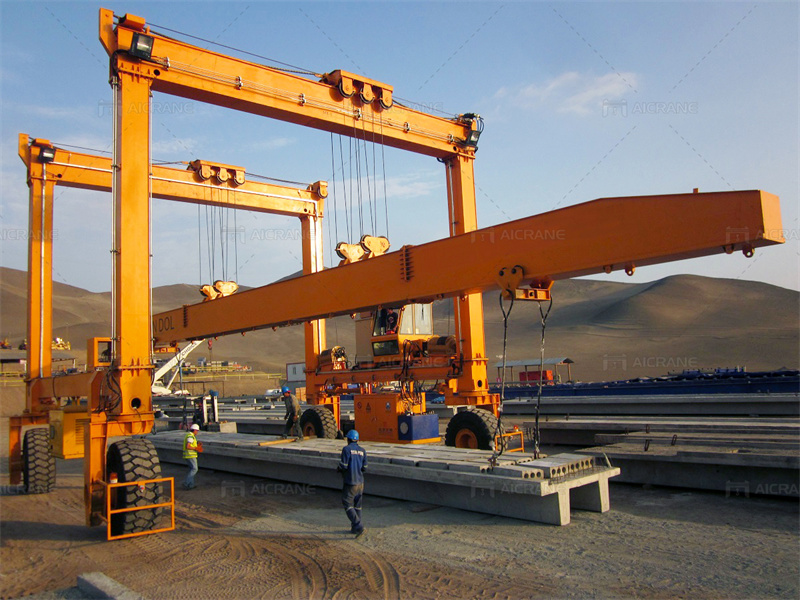Gantry cranes play a pivotal role in various industrial applications, and two common types that stand out are Rubber Tyred Gantry (RTG) cranes and Rail-Mounted Gantry (RMG) cranes. Each type has its unique characteristics and advantages, making them suitable for different operational scenarios. This article provides a comprehensive comparison between Rubber Tyred and Rail-Mounted Gantry cranes, shedding light on their features, applications, and considerations for potential buyers.

Mobility and Flexibility:
One of the primary distinctions between RTG and RMG cranes lies in their mobility. Rubber Tyred Gantry cranes, as the name suggests, are mounted on wheels, offering high flexibility and mobility within a container yard. On the other hand, Rail-Mounted Gantry cranes move along fixed rails, providing stability but limited flexibility compared to their rubber-tired counterparts.
Operational Environment:
The choice between RTG and RMG cranes often depends on the operational environment. RTG cranes(Козловой кран на пневмоходу) are well-suited for container yards where the layout may change frequently, and the need for adaptability is crucial. RMG cranes, with their fixed rail system, are more suitable for stable and well-defined operational environments, such as large-scale container terminals.
Infrastructure Requirements:
The infrastructure required for each type of gantry crane differs significantly. RTG cranes do not rely on fixed rails, making them easier to deploy without extensive groundwork. In contrast, RMG cranes necessitate a robust rail system, which may require more significant upfront investment in infrastructure.
Space Utilization:
Rubber Tyred Gantry cranes excel in space utilization within container yards. Their ability to maneuver and navigate through tight spaces allows for efficient storage and retrieval of containers. RMG cranes(Козловой кран на рельсах), with their fixed rail system, may have limitations in terms of space utilization, especially in yards with irregular layouts.

Handling Capacity:
Both RTG and RMG cranes are designed to handle containers efficiently, but their handling capacities may vary. RMG cranes, with their fixed structure, often have higher lifting capacities compared to RTG cranes. This makes RMG cranes preferable in operations dealing with heavier and larger containers.
Automation and Technology Integration:
The level of automation and technology integration is another crucial factor in the comparison. Both RTG and RMG cranes can be equipped with advanced automation features, such as container positioning systems and collision avoidance technology. However, the implementation of automation may vary based on specific operational requirements and budget considerations.
Cost Considerations:
The initial investment and operational costs differ between RTG and RMG cranes. RTG cranes generally have lower upfront costs due to simpler infrastructure requirements. However, RMG cranes may offer long-term cost advantages in terms of higher lifting capacities, operational stability, and potentially lower maintenance costs.
Environmental Impact:
In the era of increasing environmental awareness, the environmental impact of equipment is a significant consideration. RTG cranes, often electrically powered, may be more environmentally friendly compared to diesel-powered alternatives. RMG cranes can also be electrically powered, contributing to a greener operational footprint.

Future Expansion and Adaptability:
Considerations for future expansion and adaptability are crucial for businesses planning long-term investments. RTG cranes offer greater adaptability to changing operational needs and layouts. RMG cranes, while stable and robust, may require more effort and investment in adapting to future changes.
Industry-Specific Applications:
The choice between RTG and RMG cranes may be influenced by industry-specific requirements. For example, RTG cranes are often preferred in ports with varied layouts, while RMG cranes may find applications in large-scale container terminals with standardized operations.
In conclusion, the choice between Rubber Tyred Gantry and Rail-Mounted Gantry cranes depends on various factors, including operational environment, space utilization, handling capacity, cost considerations, and future adaptability. Each type has its strengths and is well-suited to specific industrial applications. Understanding these differences is essential for businesses seeking the most suitable gantry crane solution(Купить козловой кран) that aligns with their operational requirements and long-term goals.
Aicrane – компания, специализирующаяся на производстве козловых и мостовых кранов. Известные своим уникальным опытом и техническим мастерством, мы стремимся предоставить нашим клиентам широкий спектр типов кранов с индивидуальными решениями для удовлетворения их уникальных потребностей.